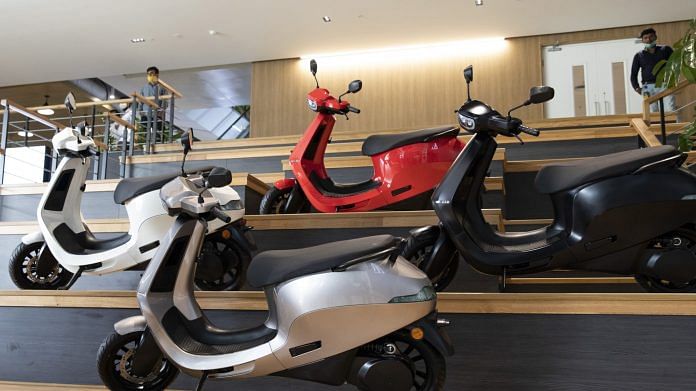The announcement by the Ministry of Heavy Industries (MHI) to reduce the subsidy amount given to electric two-wheelers to Rs 10,000 per kilowatt-hour of battery fitted and to a maximum of 15 per cent of the value of the vehicle has been taken in its stride by the industry. There has been an ongoing controversy around the subsidy issue for a few months now, with multiple investigations of certain manufacturers, fines as well as voluntary refunds. And automotive journalists in the trenches such as yours truly have been sifting through emails and ‘whistleblower’ complaints to understand what’s happening in this promising space.
But before we go further, let me separate the wheat from the chaff.
The subsidy ecosystem
The Government of India has something called the National Mission on Electric Mobility (NMEM) and under this there was the Faster Adoption and Manufacturing of Electric Vehicles (FAME) scheme that gave a cash subsidy to end-users of electric vehicles from buses to two-wheelers. FAME-II, the second iteration of the subsidy had a budget of Rs 10,000 crore beginning from April 1 2019 for a period of three years but was subsequently extended till March 2024. This money was to be shared between all sectors of the automotive industry.
However, non-commercial buyers were only covered in the two-wheeler space as the government wanted to encourage increased manufacturing in India under a Phased Manufacturing Program (PMP) aimed to reduce the amount of foreign-made (read Chinese) components in the vehicles. India has been the world’s largest two-wheeler market for some time now and created companies like Hero MotoCorp, Bajaj Auto and TVS Motors. It was believed by policy-makers that creating a demand-side subsidy would lead to Indian firms taking a leading role in electric two-wheelers as well, just like they did when the previous waves of automobile making hit the country.
Often, the path to controversy is paved with good intentions and a roadblock. Covid-19 disrupted the manufacturing process. At the same time, China doubled down on Lithium battery manufacturing, whereas India has taken a very sanguine path. On a small, lightweight product like an electric two-wheeler, batteries constitute a large proportion of the price. To be able to claim the subsidy under the PMP, manufacturers had to show that 50 per cent of the vehicle’s value-addition was coming domestically. Complaints against some manufacturers led to claims, counterclaims and raids by sundry government agencies.
Also read: EV landscape has changed since Tesla first knocked on India’s door. New challenges await Musk
Now what?
What does this subsidy reduction mean for the industry? Simply put, electric two-wheelers are going to get a whole lot more expensive to buy. Subsidy capped at a maximum of just 15 per cent of the value of a vehicle would mean manufacturers will hike prices as much as Rs 30,000 for popular high-powered scooters such as the Ola S1 Pro and Ather 450X that may take prices above Rs 1.5 lakh, much more expensive than a 125cc petrol-engine scooter with similar performance, such as the best-selling Honda Activa 5G, which starts at around Rs 80,000.
Given the massive purchasing cost difference thanks to the reduced subsidy, even the ridiculously low operating cost of an electric scooter (or any electric vehicle for that matter) makes no sense unless one is driving longer distances regularly. The average high-power electric scooter has a range of between 25-35 kilometres per kilowatt-hour of battery, which if one charges at home could bring running cost between 10-25 paise a kilometre. The Honda Activa or an equivalent scooter would cost around Rs 2- 2.5 a kilometre on petrol costs alone. These are all using prices as of May 2023. But to make up the Rs 70,000 difference, one will really need to ‘sweat out’ the equity to use business parlance.
Also read: Shanghai Auto Show marks China’s automotive rise. Western carmakers need to gear up
Should you still buy electric?
While the FAME-II subsidy might have been reduced, there are other ‘hidden’ subsidies that still come into play when going electric — a lower rate of GST, lower or no road tax and registration charges in some states. And these also cannot carry on forever. But for heavy usage vehicles, such as those used by delivery agents and as motorcycle taxis, electric makes sense.
Also, the heavy FAME-II subsidy until now skewed production and ownership in favour of high-powered scooters that have larger battery packs and bigger motors. Scooters that could easily crack a ton in terms of speed. But such powerful units, while satisfying the occasional need for speed, may not have been ideal. Several years ago, a senior executive at a large two-wheeler manufacturer had told me of the perfect trifecta, ‘70,70,70’ — that is a top-speed of 70, a range of 70 kilometers per hour of charge and a price of Rs 70,000.
While that price may not be achievable anymore, technological advances and increased domestic production of Lithium batteries could still make ‘90,90,90’ possible. The need is not for powerful, fast electric vehicles but practical medium-powered products. There could always be demand for powerful two-wheelers and success of the likes of Royal Enfield prove that. But they don’t need a subsidy. India needs practical products until it can get its electric manufacturing act together and while one appreciates the subsidy continuing, targeting has to be improved.
@kushanmitra is an automotive journalist based in New Delhi. Views are personal.
(Edited by Anurag Chaubey)



